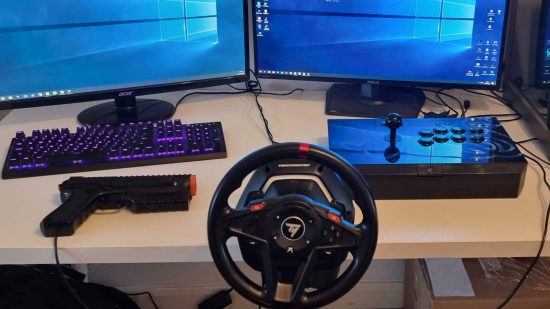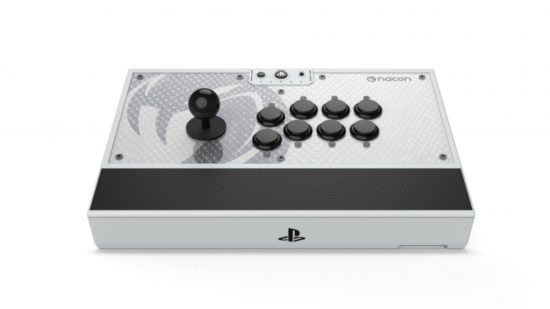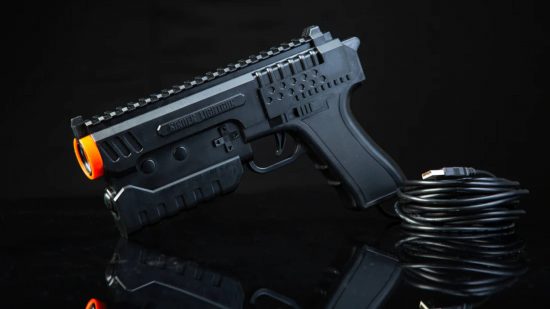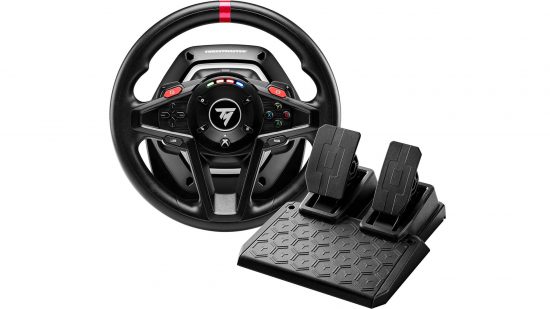I love arcade games. There’s no feeling like going down to a seaside town, and hearing the loud and obnoxious classics with their speakers whacked on full. For some, it may be hell to play on machines everyone else has abused over the years, but for me, these are my childhood. About five years ago, I had the lofty goal of bringing these arcade classics to my gaming PC, but only if I could play them roughly as intended.
For on-rail FPS games, I need a light gun; for racing games, a wheel; and for fighting games, an arcade stick. Very early on in the project, I had three classic arcade games I wanted to set up the devices for. These were Street Fighter III: Third Strike, Sega Rally Championship, and any of The House of the Dead series. However, my scope has now expanded to four, with the other game being Time Crisis. The key challenge was that I wanted to use official ports made to run on my gaming PC or use officially re-released versions of the classic games before resorting to emulating the original arcade games.
My first purchase was years ago, and it was the Razer Panthera arcade stick. I was lucky enough to spend a lot of time trying out arcade sticks months beforehand via loaner units, but this is the one I stuck with. It’s the most straightforward device of the four to set up, as everything is plug-and-play, with even a switch that enables PlayStation 3 compatibility if I fancy using it on there.
This fight stick’s key selling point was that if I bust the buttons or yank the stick too hard, I could mend the broken parts by opening it up and using the provided tools to replace them with stock Sanwa parts. So far, I’ve not needed to replace any of them, but sadly, this fight stick has since been discontinued. I also see no mention of its successor – the Razer Panthera Evo – outside of a few pages on the website. If you want my recommendation for a fight stick, the Nacon Daija and Mad Catz Ego both use similar high-quality Sanwa parts and works well on gaming PCs, even if it’s slightly harder to replace broken parts.
The only lingering issue I have with this fight stick is that most games don’t include an option to change in-game icons manually. To its credit, Capcom has recently started doing this with games like Monster Hunter Rise, but not for its retro fighting collections. It’s a bit of a learning curve to remember that the X button on an Xbox controller is the square button on a PlayStation-based pad. I did resort to post-its for a short time to remind myself of the Xbox buttons when navigating Mortal Kombat 11’s menus. However, I soon complete my first key target game, Street Fighter III: Third Strike, as it’s officially available via the Street Fighter 30th Anniversary Collection. The arcade stick works here and with more modern games with minimal fuss.
My biggest struggles come with light guns. Until the last couple of years or so, it was impossible to get them to work on LCD or OLED screens. This all changed when the Sinden Light Gun arrived on the market. The gun comes in two flavours – $105 USD / £90 GBP for the base model and $160 USD / £140 GBP if you want the recoil feature. As a fan of Light Gun games, I wanted to back one as soon as possible, so I opted for the recoilless gun. It uses a camera at the end of the device as both a webcam feed and to emulate the mouse, so when active, the cursor will trace the screen, and frankly, it’s a miracle. The gun is of decent build quality, with fully customisable buttons and a wired USB for lossless connectivity.
I occasionally have trouble getting the light gun to work correctly, as my setup includes two LCD screens and, above them, two square-like decorative pieces of art. The gun gets confused, sometimes thinking these paintings are more screens, so I have to angle them in a way that doesn’t baffle the Light Gun camera. In addition, the settings menu is somewhat complicated, and it took watching a few YouTube videos from external sources to troubleshoot calibration issues. However, by applying a white border around the screen, I soon blast away at my screen as if I was at the arcades.
The accompanying Sinden Arcade Pedal came separately, with many thanks to Sinden for the unit. It costs $250 USD / £200 GBP for one or $475 USD / £380 GBP for a set of two. Essentially, these pedals emulate single button presses on the keyboard. This chunky pedal is straightforward to set up, particularly when running arcade versions of Time Crisis through emulators such as MAME. One is enough for me as I only care about the early Time Crisis games, but two pedals are required if you want to play future instalments in single-player. At the very least, it’s more justifiable as a luxury purchase if it truly emulates the old-school arcade feeling, and having tried it myself, I couldn’t go back.
The Sinden Light Gun takes a little more work than I’d hoped it would to play nice with House of the Dead Remake. However, the original arcade House of the Dead works well using the Sega Model 2 arcade game emulator, which is handy as I’ll need this for games that work with the wheel. The PC ports of the second and third games are also easily findable on Archive.org and take little fuss setting up with the Sinden Light Gun, though I did need to install a dedicated program to force House of the Dead 2 to swap screens. Since the gun doesn’t work with the PS3 and both House of the Dead 4 and Scarlet Dawn aren’t available on PC, I’m out of luck on this front.
Lastly, let’s discuss the most recent addition – the Thrustmaster T128. This wheel is a mid-range option, retailing at around $200 USD / £170 GBP, and comes in both PlayStation and Xbox button varieties. I should point out that Thrustmaster kindly provided my Xbox-configured Thrustmaster T128. As my first wheel peripheral, the device is mostly simple to set up, though I wish the foot pedal wire was about a metre longer to help me manage cables and ensure that the device reaches my feet.
The wheel build quality is outstanding, with tons of buttons I can map to gear shifting, changing the viewpoints, or anything else I need. It doesn’t come with a manual gear shift, instead opting for flappy paddles, but this suits most arcade racers. I can just map the paddles as first and second gear, while the nearby red buttons can be third and fourth gears. For more modern games, such as Forza Horizon 5, I can flick between gears with both paddles as initially intended. The force feedback from the wheel helps with the immersion, particularly when driving over gravel in Forza Horizon 5. Even when emulating games such as Sega Rally, it still gives a bit of a kick to simulate how the original arcade machines function. It’s so well-made that I had the confidence to throw it into corners, quickly spinning the wheel and desperately trying to stay on the road.
I had to consult the manual when learning how to fix the wheel to my desk, as I had absolutely no idea how the clamp worked, but its instructions are well written. My only outstanding issue is that the foot pedal won’t sit still. It’s durable, for sure, but it slides around my admittedly thin carpet as if I’m trying to play on an ice rink. I’d imagine this would be worse if I had a hardwood floor. It has rubberised soles on each of the four corners, but I find they don’t do much.
I got lucky when it came to finding a PC copy of the original Sega Rally. It’s almost the same as the Sega Saturn version, running well on Windows 10. However, I just couldn’t get the port to work with the wheel as it looks for antique devices that no longer exist. So instead, I opt to bite the bullet and download it for the same dedicated Sega Model 2 emulator I use to play the original House of the Dead. To my absolute delight, the wheel is instantly compatible without interfering with my Sinden Light Gun settings since the control inputs are game-specific. However, it’s worth noting that it took me an embarrassingly long time to realise I could test without playing the game by looking at the Val number go up and down as I press on the pedals while still in the configuration menu.
Of course, my pursuit of a full-arcade conversion isn’t complete. I still reckon a proper flight stick running Star Wars Trilogy arcade (the one where you use a flight stick to fight Darth Vader in a lightsaber duel) would be my next goal, but that’s quite some time away. For now, though, I’m happy I can play these retro games using peripherals as intended, and cost aside, it’s largely been a painless journey. There has never been a better time to revive the glory days of the arcades, and with a little help from well-made peripherals, it need not cost a fortune or take up too much valuable living space.



